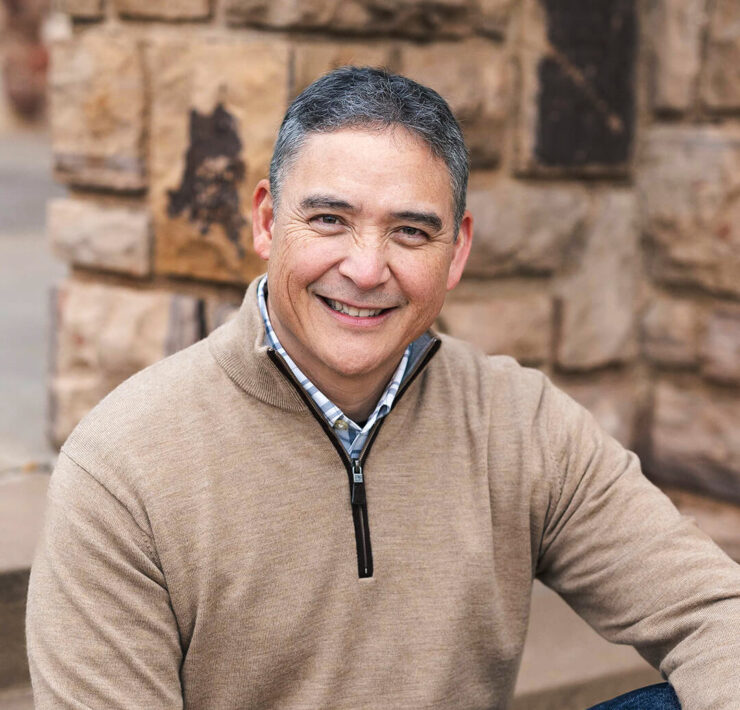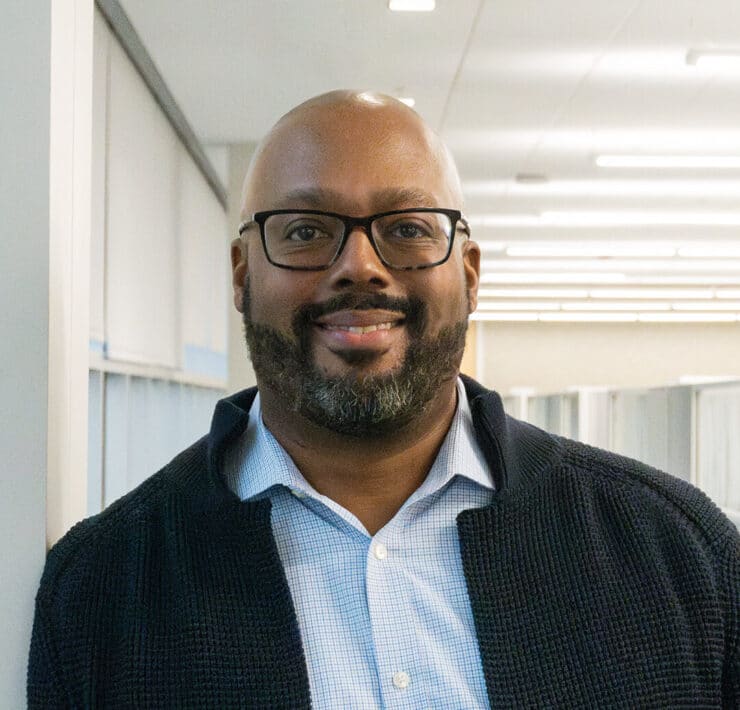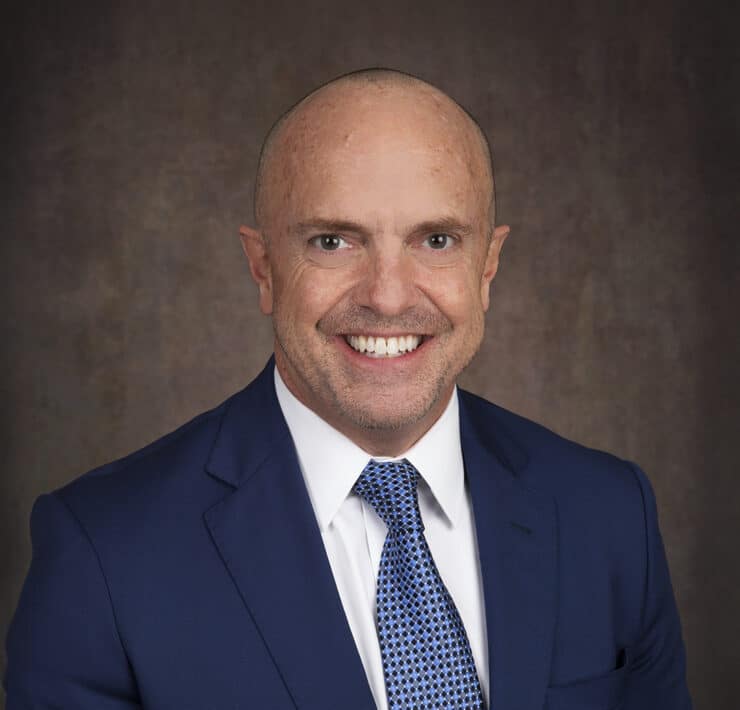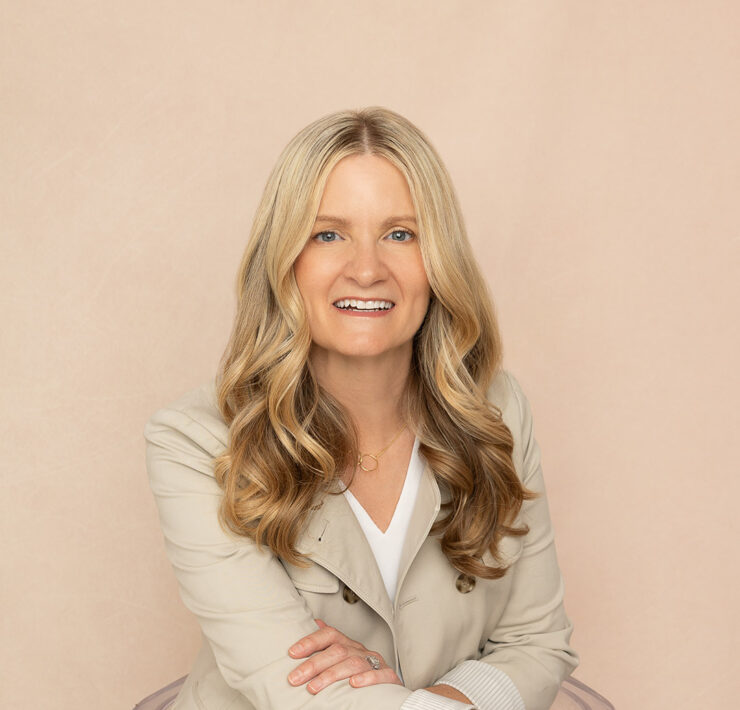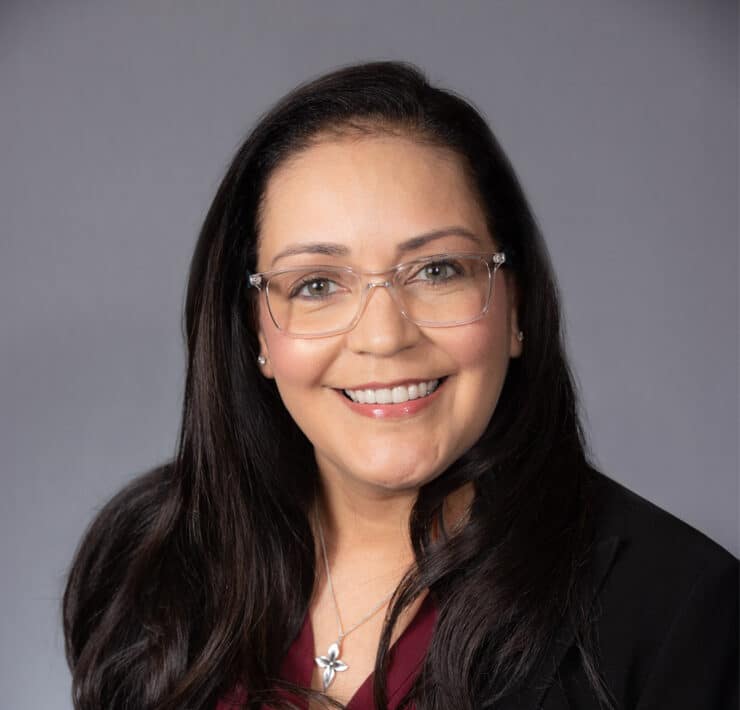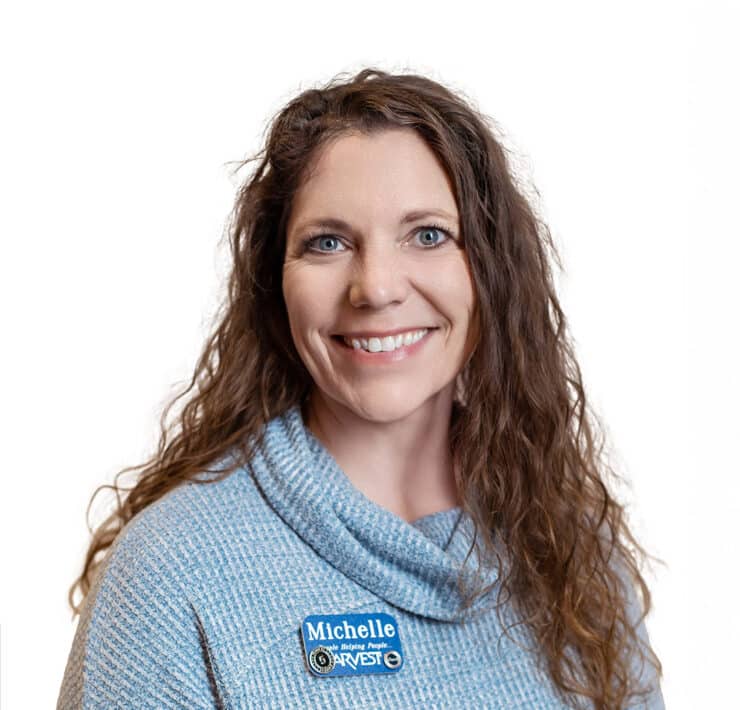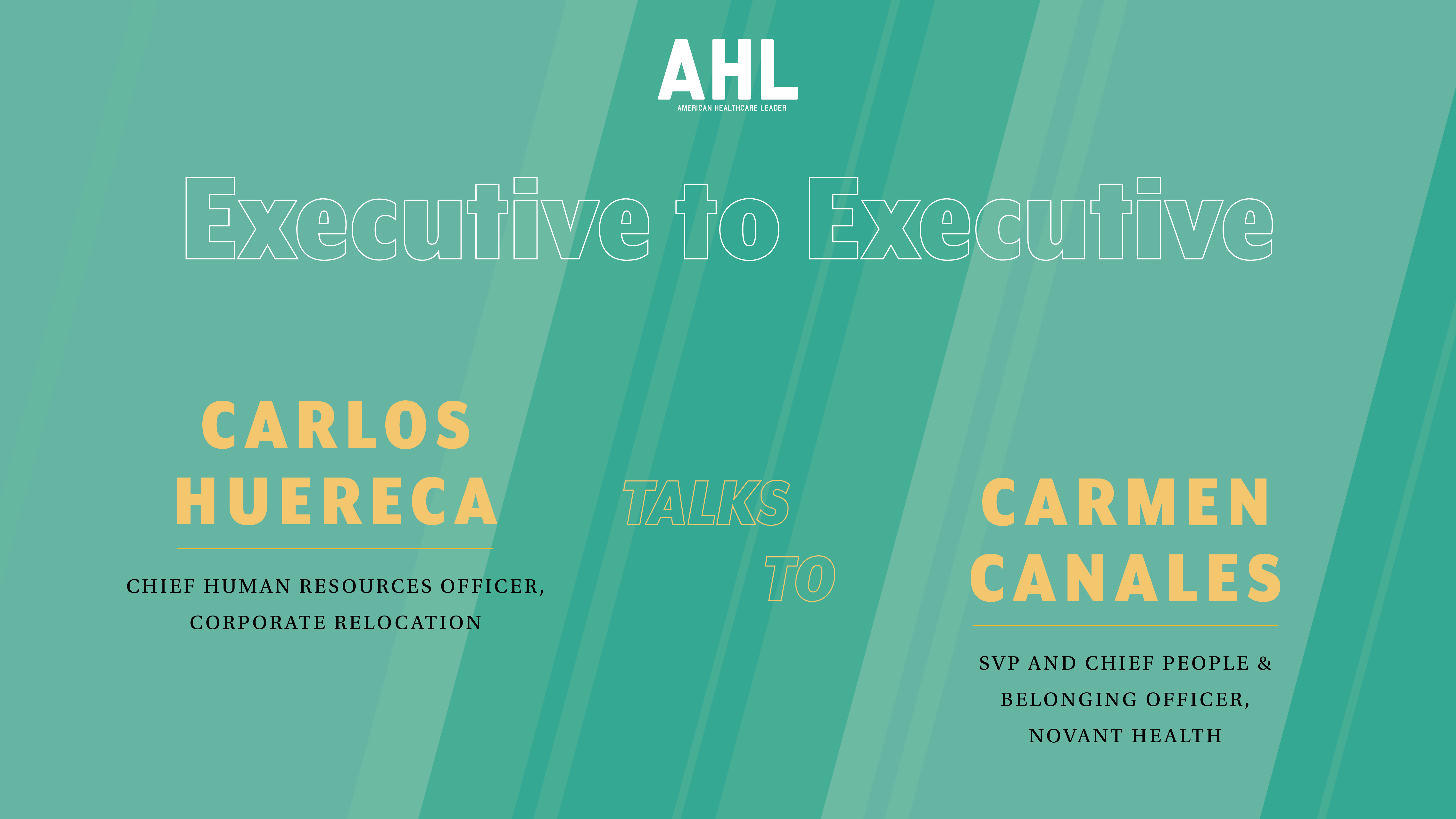
|
Getting your Trinity Audio player ready...
|
As a child, Carmen Canales found herself in situations beyond her age range when people would speak to her instead of her parents. Her Puerto Rican mother and Bolivian father traveled separately to the US to study and met in Michigan, where Canales was born and raised. Even though her parents were highly educated, people would overlook them because of their accents and speak to the young Canales.
“Seeing how a very smart person with an accent is sometimes treated in this country just really stuck with me,” she says. “My parents would often tell me, ‘Mija, you don’t have to solve all the problems of the world.’ . . . I had a really special opportunity to help people, to bring a voice, to name injustice, and do something about it.”
Canales has built a robust, thirty-year career within the human resources function and worked across various industries, such as higher education, consumer goods, and banking. And she’s made sure to share her knowledge, whether through speaking opportunities through the Society for Human Resource Management, mentorship, or nonprofit board placements.
As senior vice president and chief people and belonging officer at Novant Health, Canales has seen her department names as one of the 2022 Most Innovative HR Teams by HRM America.
Our Executive-to-Executive interviews put the power of storytelling directly into the hands of executives themselves. Through these peer-to-peer conversations, executives like Canales can share key moments from their journeys, inspire future generations, and own their own stories. In turn, our audience gains a line of sight into the executive experience, as well as direct insight into what leaders around the world are really thinking and talking about.
In the final executive-to-executive interview of our series, Corporate Relocation International CHRO Carlos Huereca spoke with Canales about the HR commonalities across industries, recruitment and retention within the healthcare industry, and her advocacy for women and Latinos in executive leadership roles.
Hello and good morning, everyone. I’m Carlos Huereca, Corporate Relocation International CHRO. And I’m thrilled to be here with SVP and Chief People and Belonging Officer of Novant Health, Carmen Canales. Carmen, welcome and thank you for joining me.
Hello, everybody. I’m so glad to be here. Thank you for having me, Carlos.
Absolutely. Before we get started, want to take a quick moment to thank American Healthcare Leader for hosting this interview. All right, let’s jump right in. Carmen, you’ve held HR roles across different industries throughout your career consumer goods, banking, higher education, and now healthcare. How has working in these varied industries shaped your leadership style?
I love that question. I’ll say that one of the things that I’ve experienced when I’ve gone into different industries is people saying, “Carmen, but you don’t know this industry. It’s so different. The people are different. The issues are different.” And now, having worked in diverse industries, as you’ve described, I can say that folks really need the same things.
I’m a follower of Gallup. I’ve studied Gallup and their concepts of belonging and strengths. And the four things are trust, compassion, stability, and hope. That is the same everywhere. I’m telling you, it’s the same at every level. What has happened, however, is that as I’ve gone through different industries, I’ve been able to see the commonalities and sometimes the challenges that exist within any organization. For example, the tug between revenue generation and ideation and running the operations and having good financial health. I think that makes for a really interesting mix of input that you get in terms of having a better product and a better experience for team members. It has just been interesting to see how does the global market affect even a domestic operation?
So it has been really fantastic for me, personally, to be able to have these HR roles and the HR accountability in various industries.
Carmen, from your perspective, talking about those four specific items trust, compassion, stability and hope how do you see that one is more important than the other? As you move throughout these different roles and different industries, it’s like trust number one in an industry and then number four in a different industry? Or do you feel that there’s really not an order and all of them are equally important?
I have to say, I think that they all matter, but the importance shifts depending on the person, depending on what’s going on in the industry, depending on what’s going on in the world, depending on what’s going on within that organization. In particular, sometimes trust is about trust recovery. Something may have happened that has caused fear in what we call team members or in the workforce and employee base. And the organization will have to really work to build that and to regain that.
Other times, it’s an opportunity, as we saw during the pandemic, to really employ compassion, to have it not just for the people that we were trying to take care of, but also for us as people. For us as people who are trying to balance work, life, children, parents, a whole bunch of internal and external pressures. So at any given moment, I think that we have to pay attention to each or all of them. And as leaders especially, it’s important to be attuned enough to what your team members need, to what your workforce needs, to know when to call on which one.
“As leaders especially, it’s important to be attuned enough to what your team members need, to what your workforce needs, to know when to call on which one.”
Carmen Caneles
Couldn’t agree with you more. Well, let’s talk a little bit more about the healthcare industry since you talked a little bit on the pandemic. You joined Novant Health right before the pandemic. What were some of the challenges that you initially faced and how did you overcome them?
Like with other industries or other healthcare organizations, one of the things that we saw was immediate fear and issues of safety. So immediately we didn’t know, what is a pandemic? Is this going to last for a month? Is it going to be all wrapped up and done by the summer? Will there be a vaccine? Won’t there be a vaccine if we all take ourselves back to the height of the pandemic, or actually the beginning of the pandemic? We didn’t even know what it was to wear masks. Some of us even felt silly, like putting that on to go into a supermarket. I remember thinking it’s just weird and it’s kind of scary. It’s odd not to see people’s whole faces. It makes me feel a little bit unsettled.
So I would just say that, like others, I saw lots of questions in us trying to bring calm and stability to people. And then beyond that, when I think about the issues of safety, simply the matter of caring for people required such courage and dedication and bravery from our own team members to suit up and go into that room and take care of people where we didn’t know the outcome for them or for ourselves.
Some people might liken it to the height of AIDS when it came out and there was such misinformation and it was frightening. And to be called to do health care during that time was really something special. And I think that we all should be really grateful to our healthcare workers.
Absolutely. Huge shout out to all the healthcare workers. You talked about how really we didn’t know a lot about the pandemic overall. And one of the concepts that came out of the pandemic was this concept of the Great Resignation. Retention and retainment has been an important topic for the field of HR. The healthcare industry, especially, has seen a high number of their workforce resigning. What should healthcare companies be doing when it comes to recruitment and retainment?
Sure. Well, I’ll start by mentioning that you cannot out recruit a retention challenge. Meaning you have got to engage the team members that you have in a really inclusive way that fosters belonging, that makes everybody feel like they matter. I want to feel like I matter. I want to feel like people see me and that I can bring my full self to work. And so I would say for all of us, regardless of industry, it starts with who do you already have taking care of la familia? Looking at what are we doing, what are their pressures. Is child care weighing on them? How can we help figure that out?
So really just wrapping our arms around who do we have in our workforce right now. How can we help them think about everything in their lives? How can this be a destination workplace for them where we are offering them ways to grow their careers, to bring folks along, to receive mentorship, to offer mentorship? So really pausing before we jump straight to recruitment, as lots of organizations are tempted to do, thinking about who do you have and how are we taking good care of them?
And then in terms of recruitment, I have to say one of the things that I really love is that I think one of the good things, if we can call it that, from the pandemic, has been the rebalance of the relationship between the employer and the employee. So no longer is it the employer saying, “This is how we’ll work and this is what we’re going to do, and these are the hours and blah, blah, blah.” Like, no sir. Our employees from the five generations in the workforce have said, “I love my job and my career. I also love to work out or to go to a food truck or to spend time with my family. I am more than just my job.”
“In terms of recruitment, it really is a time for all of us to be creative, to think about workforce development. How do we see for people something they may not even be able to see for themselves?”
Carmen Caneles
So in terms of recruitment, it really is a time for all of us to be creative, to think about workforce development. How do we see for people something they may not even be able to see for themselves? They might be the first one in their families to even consider, in my case, a career in healthcare. How do we make that more come to life? How do we look beyond the traditional things that we’ve required?
Does this thing really require a four-year degree? That may be the case, but I would challenge if we’re not operating on somebody, then other roles have much more flexibility, I think, in terms of the design and the background and the skill set that would make somebody qualified. So just really innovation and creativity are the biggest things that I would think about. And then the other thing I would say is considering the world is our oyster. So a talent marketplace, not just recruiting from the places that we’ve always recruited from.
I love that. And it really sounds that you have created a great culture within your organization. And I definitely want to ask a question around culture, but before I get there, you said a couple of things that really caught my attention. Belonging, growth, opportunities. I think those two items right there are really powerful. From my experience, what I’ve seen in the past is this huge focus that you highlighted around attracting and retaining talent, but at times not the same level of focus around developing that talent. So I think it’s equally important to create initiatives or programs that’s going to be focused on the development of the talent that you already have in the business, which you alluded to. And I thought that was really powerful. So thank you for sharing that.
Yeah, thank you. Carlos. We have a huge focus on upward mobility, on even attracting high schoolers and younger to have exposure to healthcare. But again, once you’re here, really being on a track where you can go from an individual contributor to manager, if that’s interesting to you, where you can further your skills around diversity and inclusion or whatever the case may be, we have to do that. It’s competitive and we want our folks to have all of the development that they are looking for right here in.
What are some of these successful initiatives that you’ve seen within the healthcare space?
Sure, I’ve seen a few things and one of the things that I have most appreciated is, again, examining what do we already have and doubling down on that. So in our case, for example, we have intentionally looked at our business resource groups, our affinity groups, and considered how do we make these more strategic and how do we really use this group of interested folks? Whether it’s the women’s resource group or physicians or the Latin resource group, not having folks do things that are only sort of community engagement or cultural or even goodwill. Certainly that’s important.
But bringing it to the strategy, we have a goal, a stated goal, of retaining our talent. So how can we do that? By getting people to belong, to be involved. By using the team members and the resource groups as our recruiters. By going to events, not just to be at the event, to hand out swag, although I like an aubergine T-shirt, but to talk to people about, hey, we have these really cool jobs open. Have you seen yourself in this? Have you thought about it? Let me tell you about it. So really using our business resource groups differently to champion our culture and to be ambassadors of what we do.
Additionally, we do things like others around engagement surveys to really get input from our workforce, around benefits, for example, not just having a few folks in a room designing a benefits program, but taking a beat to ask our workforce, what matters to you? What do you struggle with? Where would you like choice? How can we hear your voice? And using that input to inform what we’re going to put in place for our workforce.
It really sounds like you’ve gone through this rebalancing exercise even inside your organization, within your BRGs to really explore and expand on what you already had in place, but really make it better for your associates and for the people that work in your organization, which is fascinating. So, again, thanks for sharing that.
I love your framing of it as rebalancing because for all of us, you have great things in place, but it all could use a refresh. And in our case, we had an opportunity to shift it and say, okay, we need some help over here, so let’s redirect ourselves a little bit. And it’s going very well. We’re increasing our membership in the business resource groups and have more people caring about the things that will inform our culture.
That’s awesome. Carmen, you have nearly 30 years of HR experience, and you’ve seen the function of HR evolve over that time. What changes do you see on the horizon for HR on how he partners with the business?
Well, thank you for calling out, Carlos, that it’s nearly 30 years. Ay dios mio. So with that comes some wisdom from things that I have not done well and from lessons learned. I would share that one. I think vulnerability is key. It’s important to talk about where we have had failures as an HR team, as an organization, to talk about, hey, let’s examine that. Let’s have a debrief and think about how we could do things differently.
When I look at the landscape and of a people team, a human resources team, a human capital team, a talent team, I’ve seen a few things shift. I think there’s really an appreciation and more understanding of HR as a discipline. It is something that people study on purpose. My master’s degree is in this work. I intentionally wanted to go into human resources because I often felt like, well, if not me, whom? If I don’t advocate, who else is going to do it? And so, really, the professionalizing, the professionalization of the industry and of people who intentionally choose to pursue this field, expanding it, to really have human resources and belonging and DEI concepts all go together.
The full talent lifecycle, the full talent experience, less of the, “Hey, HR is the place where you’re in trouble. HR is bad.” You’ll see all sorts of TV shows and jokes about that. But again, really, a shifting of two-thirds of any company’s budget often is around something to do with the people. And so an appreciation of talent as a competitive advantage and the strategy that human resources professionals bring to this space, a focus on that really allows all of us to show up differently and to drive the strategic initiatives of the organization. You can’t do it without HR 100 percent.
“People often talk about my courage and my resilience and my grit. So I’m not shy to name something that may not strike me right.”
Carmen Canales
I love that. And it’s interesting that you said it used to be like, “Oh, you’re going to HR. You’re in trouble.” When I started my career a little bit over 20 years ago, Carmen, I remember hearing that if you were going into the HR office. That was not a good thing. And that has definitely changed. And now the function of HR is truly an HR business partner that adds value to the overall mission and strategy of any organization. So thank you for sharing that insight. Talking about being an advocate, I’ve heard you said a couple of words here in Spanish, and I know that you’re a big advocate for women in leadership and Latinos in executive roles. Why don’t you tell us a little bit more about that?
I’m happy to. I’ll start by talking a little bit about my background in my childhood. So I’m the child of immigrants, mother from Puerto Rico and father from Bolivia. They both came stateside to study and met in Michigan, which is where I was born and raised. And I tell you this because my parents were both highly educated and they both had accents in English right, in one of the several languages that they spoke. When you’re the child, you often find yourself in situations that are way beyond your age range because people will speak to you instead of your parents, even though they’re standing right there and they have 20 more degrees than I do because they’re my parents and they’re older than me. And so I would just say that it informs me, seeing how a very smart person with an accent is sometimes treated in this country, just really stuck with me. And my parents would often tell me, mija, you don’t have to solve all the problems of the world. I remember this conversation at age seven, right? And I remember like, but don’t I have to do that?
And just seeing that I had a really special opportunity to help people, to bring voice, to name injustice and to do something about it. Importantly, as I’ve grown and evolved and worked in different industries and just had more life experience and now that I have my own children, I would say you learn that there are ways to do that that are not frightening to people, that are inclusive, that don’t make any particular group feel like they are being called out for not being good partners. I have something that I’ve employed that people who know me will say is this concept of permission to be raggedy? Which is me really offering to people, you may not have grown up with the right terminology or you may not have studied it, you may not have taken the time to study it. So with me, sort of a I would say initially, no judgment zone. Bring up the concept. I want us to be able to talk about it. I also count on you to do your own learning. I certainly can’t represent all Latin people. I’ll do my best but haven’t figured that one out yet. So I’ll count on you to bring something as well.
But you should not let fear or misunderstanding or even a lack of having the right words stop you from entering into a conversation, because I want to be a place where we can talk about that, where we can do that together. That, for me, has turned into some really special opportunities to mentor people. I’m fortunate that I have a good following on LinkedIn where people will ask me, “Wow, Carmen, how did you do it?” And I would say, “I like to lead with yes, sure. What’s the best that could happen? Let’s give it a shot.”
I am not shy. People often talk about my courage and my resilience and my grit. So I’m not shy to name something that may not strike me right. And quite honestly, given my role, it’s up to me often to be that voice in the room that will say, hey, this might be uncomfortable, but let’s name that dynamic and let’s roll up our sleeves and sort through it. And then thinking about Latinos in particular, when I think about the powerhouse of spending power of this demographic group, and I would say even specifically US born Latinos, and I mentioned that specifically because often folks will lump everybody together and think that we’re all immigrants or have different documentation, status, whatever.
If you just think about the demographic of stateside born Latinos and their likelihood to start businesses at a faster rate than anybody else, to get more degrees, to be able to communicate in at least two languages, what a powerhouse of talent for all of us to be advocating for. And I would just say, Carlos, I have really benefited from having mentors and feel absolutely called to bring women, Latinos, and anybody else who wants to join the ride, to bring people along to mentor, either through sharing where I’ve succeeded or again, where I haven’t done something so hot. And my mentorship would be, well, don’t do that, try something else.
Well, the powerhouse continues to get stronger and larger. That was really beautiful, Carmen, and it really hit home. I came to the US. When I was 13 years old, and when I started my professional career, I remember being one of those people that actually struggle and was afraid to say something because of my accent. And when you’re a teenager, you go through this transition of going away from your country, your language, and you go through these learning process again, and it’s not easy. I’m sure there are a lot of professionals out there that probably experienced the same thing that I experience, and I think it’s really powerful.
So I appreciate you sharing a little bit more about your personal background because it really impacts a lot of people that probably went through a similar situation, and I certainly appreciate that. One of the things that my father used to tell me all the time is, and I’ll say this in Spanish, El que no vive para servir, no sirve para vivir [One who does not live to serve, doesn’t serve to live]. That has really been my approach to leadership. It’s really just, be a service leader and really focus on being great at that. So just being able to connect your story and your personal learning and obviously your professional learnings with mine and hopefully with the experiences of our audience, I think it’s really powerful.
I certainly appreciate it.
“I have a Post-It note on my desk that says, ‘Who else needs to know?’ to remind me, are all of the voices at the table that need to be at the table, or do we need to make a new table?”
Carmen Canales
Well, the last question that I have for you, and it’s to some degree, it relates to what we just discussed. What advice will you give to a young professional or a young executive that is in the process of starting their career?
I gave this a good amount of thought, and I’m asked this question a lot, so I would mention a couple of things. One is this spirit of leading with positivity and leading with yes, which is not about being silly and not about being taken advantage of, but it is about, again, what is the best that can happen? How can I be in this space? What can I contribute? It’s also about mentorship and mentorship. So thinking about how are you a good follower? You don’t want to be that person that is going to lead with disagreement for everything. So being focused on what are the things that you want to battle about or that you want to bring up because they matter. Being really true to your core values and having a few things that you stick to that you’re known for. Thinking, even if you are earlier in your career, who are you bringing along with you? How are you including others? I have a Post-It note on my desk that says, “Who else needs to know?” to remind me, are all of the voices at the table that need to be at the table, or do we need to make a new table?
And then really, I would just say seeing yourself in any role in the C-suite, seeing that and making a plan for it. So credential yourself. Know the data, do your research, have the stats. Don’t just make an impassioned argument, but have your research, your degrees, your education behind you. If a degree is not something that’s in your future, then how else do you go about getting that exposure and that experience, joining learning, being a lifelong learner, and just going for it? Sí se puede.
I love that. And that’s actually how you and I met at a nature conference. I remember the Sí se puede message that you gave on that conference that was really powerful and impactful for me. So, again, climate SVP people and belonging officer and no one help. This has been very insightful. Thank you for your time. Thank you for everything that you do.
What a pleasure. Thank you so much.


